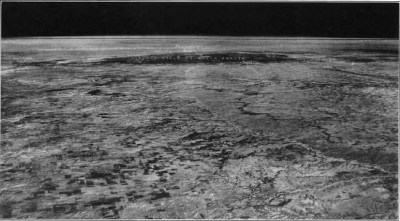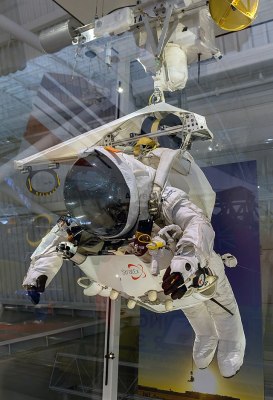

We think of human flight as a relatively modern affair, with a few claims to the first airplane all around the turn of the last century. But people flew much earlier than that by using hot air balloons as well as gas-filled ones. While the Montgolfier brothers get most of the credit for hot air ballooning in 1783, there are some reports that a Brazilian priest may have lifted himself with a balloon as early as 1709.
Regardless, we’ve had balloons a good century earlier than winged flight, if not longer. While the device is deceptively simple, it is possible to get a balloon to very high altitudes without a lot of specialized technology. Airplanes at high altitudes need a way to get enough oxygen to fuel their engines, or they have to rely on rockets. Either way, there are plenty of design and operational challenges.
Balloons, of course, can simply rise to the occasion. Auguste Piccard and an assistant took a gas-filled balloon to 15,781 meters in 1931. Their gondola was pressurized, and they were the first humans to see the curvature of the Earth and the dark sky above. That record wouldn’t stand for long, though.
CCCP-1
The Soviet Union was keenly interested in Piccard’s flight, and the Soviet Air Force set about to build a research vessel, CCCP-1 (in English, USSR-1), that flew in 1933. The envelope was a large amount of thin fabric impregnated with latex and filled with hydrogen. The air-tight gondola presented several challenges in design. Most of the science experiments were outside, of course, and in 1933, you didn’t have an Arduino and RC servos to control things.

Life support was some oxygen bottles and chemical CO2 absorbers. Even so, all three of the crew wore pressure suits and parachutes. Control of the height of the balloon was via ballast. There were 40 small bags outside the gondola full of lead weights. An air-tight mechanical arrangement allowed the crew to flip the bags over, dumping the lead.
The first attempt didn’t work well, but the second attempt was a huge success. It appears that the method of filling the envelope was the cause of the problem with the first attempt. About 3,000 cubic meters of gas took the balloon to a record 19,000 meters.
Not long afterward, in early 1934, a Soviet civilian organization went to 22,000 meters in Osoaviakhim-1. However, the lengthy flight stayed too long in the sun, lost gas, and rapidly descended, killing the three crew members aboard. They had parachutes, but it is thought they were incapacitated by high g-force as the gondola fell, rotating its way down from 12,000 meters.
Second Try
Lessons from the tragedy informed a refit of CCCP-1. In 1935, it reached 16,000 meters but then started plummeting due to gas loss through a faulty valve. The commander, Christian Zille, ordered his crew to bail out, and they did so at 3,500 and 2,500 meters.
One of the refits was a large parachute designed to stabilize a falling gondola, but Zille was fearful that deploying it would destroy the scientific instruments, wasting the mission. Instead, he dumped everything he could out to reduce weight. Before the balloon landed, Zille stepped out of the gondola, clinging to a ladder. Presumably, he thought if the crash were bad, he might be thrown clear. He didn’t need to. The craft made a soft and safe landing.
Meanwhile, Across the Ocean

The United States also sent a balloon with a crew up in late 1935. Explorer II, a helium balloon, reached 22,066 meters with two Army Air Corps Captains aboard. It’s predecessor, Explorer I, was a hydrogen balloon, and despite reaching 18,475 meters, had a violent drop in altitude followed by a gas explosion. The crew barely managed to parachute out at 150 meters above the Earth.
There was concern for the scientific instruments aboard Explorer II in the event of a rough landing, so the crew released them at relatively low altitudes to drift down on their own parachutes. The cost was high, too, with $60,000 spent. That’s $1.3 M today.
Modern Records

In slightly more modern times, Joseph Kittinger did a skydive from a balloon at 31,300 meters in 1960. Felix Baumgartner pulled the same stunt from 38,969 meters in 2012, and Alan Eustace lept from 41,419 meters in 2014.
As you can see in the accompanying video, the Kittinger jumps were part of an Air Force project to test multi-stage parachutes made for high-altitude ejections. This was dangerous testing. On the first attempt, the first stage parachute caught his neck, causing him to black out and spin at about 120 RPM. Luckily, his main chute opened automatically, and he returned to the ground safely. There were only two more tests after that.
Eustace, on the other hand, was a retired Google Vice President. He made his jump in a what was essentially a space suit. He exceeded 1,323 km/h as he descended for almost four and a half minutes.
No Crew
Putting people up in balloons is a hassle — they’re heavy and require all that life support and safety gear. The home hacker should probably stick to unmanned balloons like the pair launched from the Hackaday Supercon. If you are worried about how to get your payload home, there’s always R2Home.
Rising to the Occasion: A Brief History of Crewed High Altitude Balloons
Source: Manila Flash Report
0 Comments